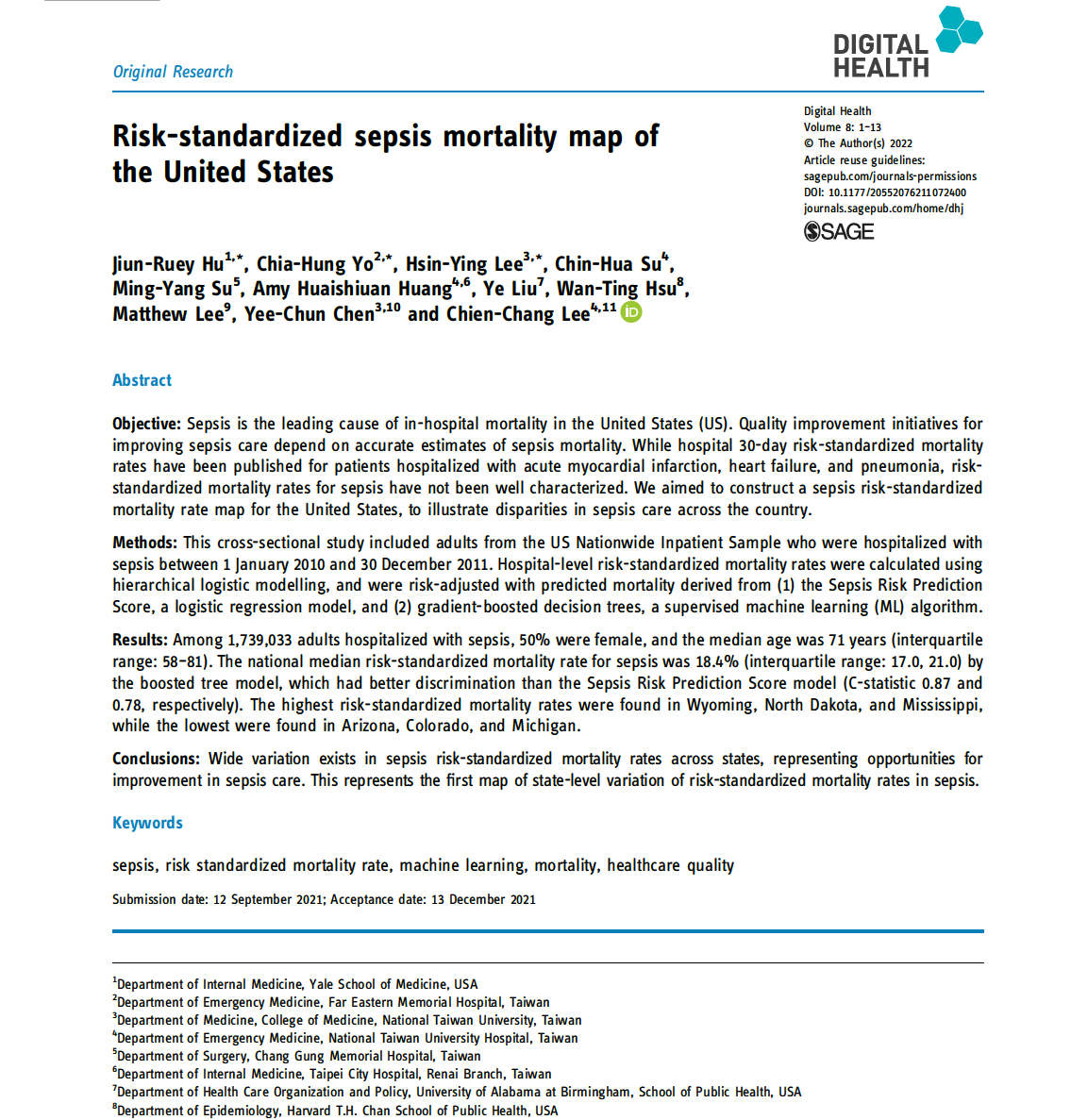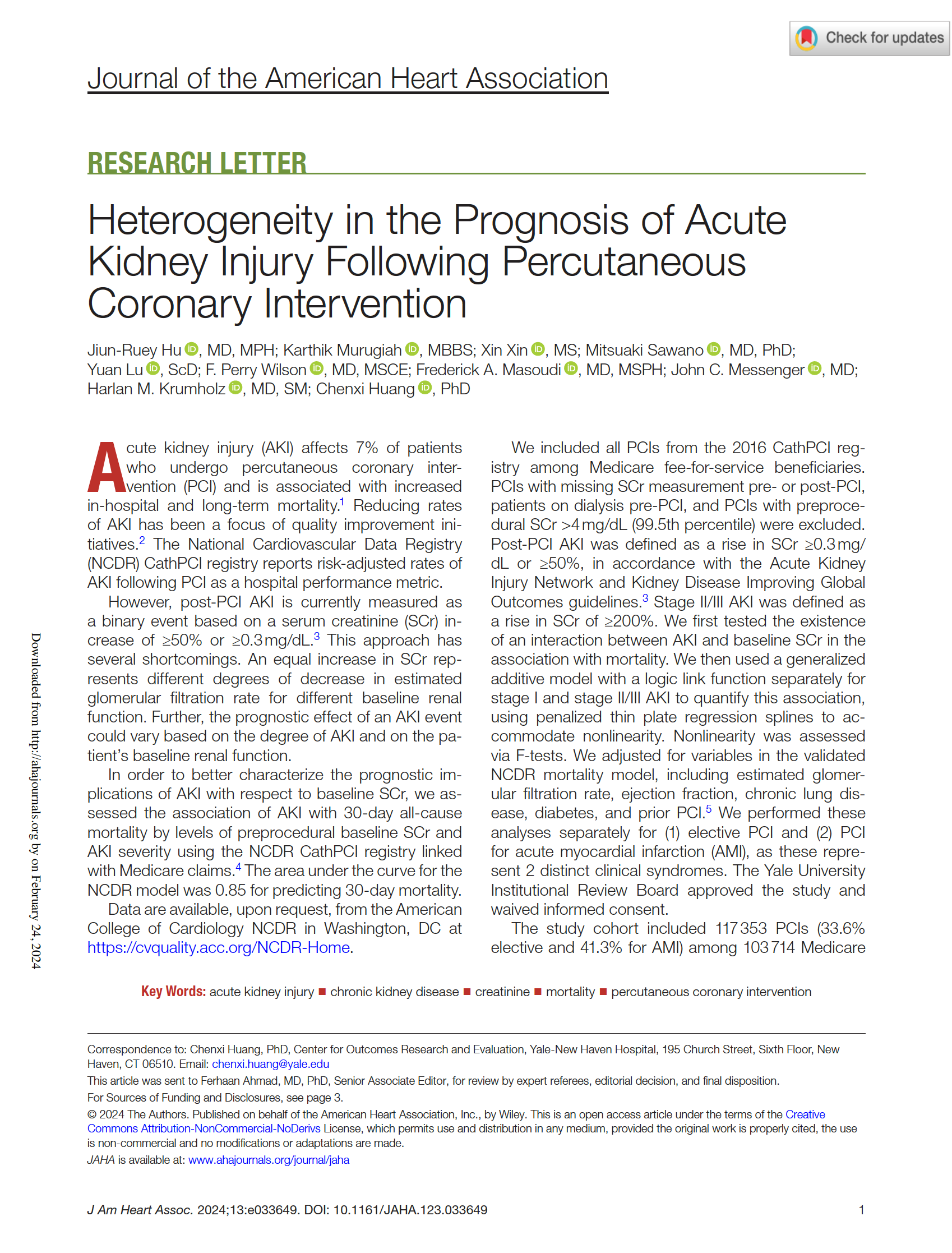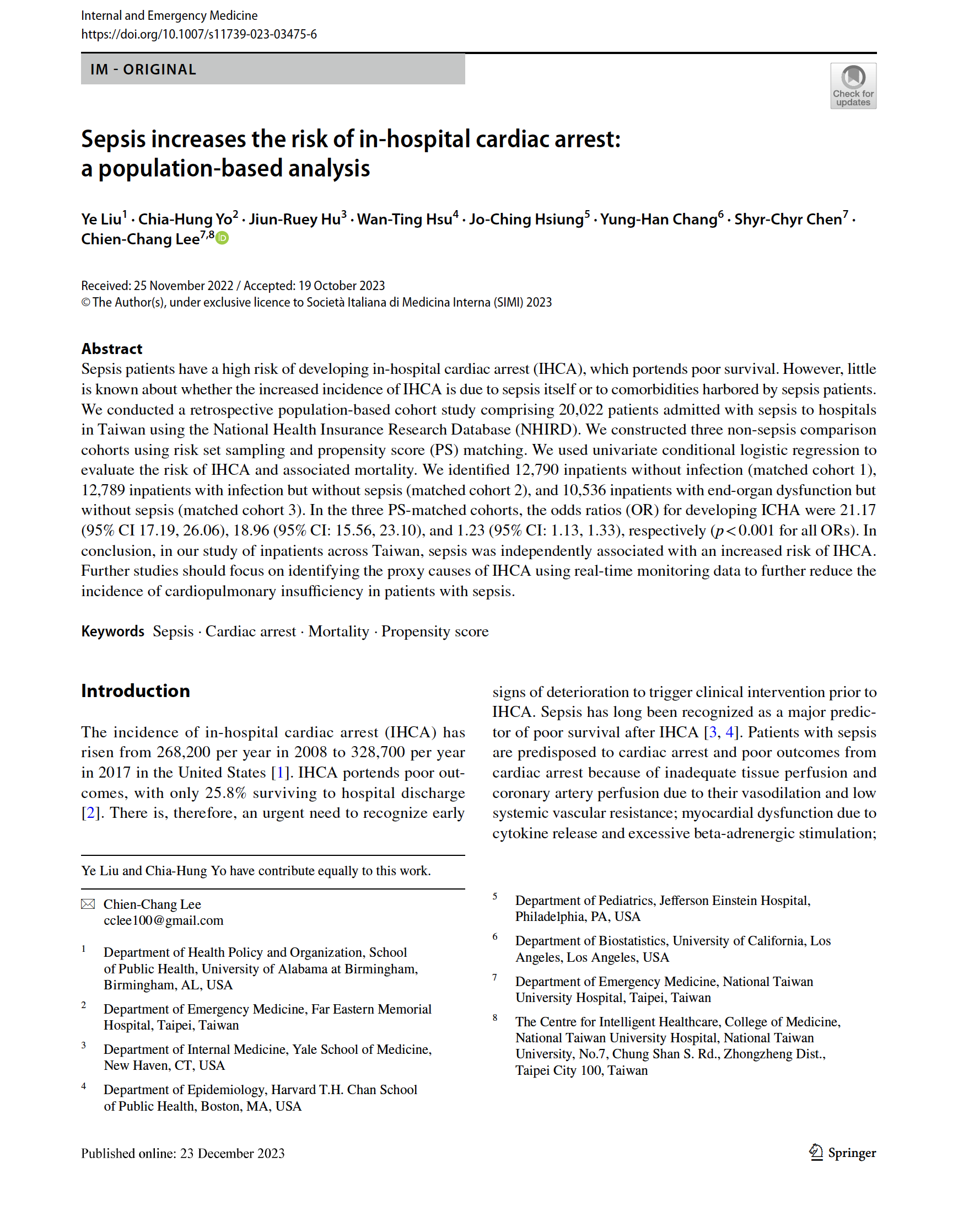
📝 Abstract
Objective:
Sepsis is the leading cause of in-hospital mortality in the United States (US). Quality improvement initiatives for improving sepsis care depend on accurate estimates of sepsis mortality. While hospital 30-day risk-standardized mortality rates have been published for patients hospitalized with acute myocardial infarction, heart failure, and pneumonia, risk-standardized mortality rates for sepsis have not been well characterized. We aimed to construct a sepsis risk-standardized mortality rate map for the United States, to illustrate disparities in sepsis care across the country.
Methods:
This cross-sectional study included adults from the US Nationwide Inpatient Sample who were hospitalized with sepsis between 1 January 2010 and 30 December 2011. Hospital-level risk-standardized mortality rates were calculated using hierarchical logistic modelling, and were risk-adjusted with predicted mortality derived from (1) the Sepsis Risk Prediction Score, a logistic regression model, and (2) gradient-boosted decision trees, a supervised machine learning (ML) algorithm.
Results:
Among 1,739,033 adults hospitalized with sepsis, 50% were female, and the median age was 71 years (interquartile range: 58–81). The national median risk-standardized mortality rate for sepsis was 18.4% (interquartile range: 17.0, 21.0) by the boosted tree model, which had better discrimination than the Sepsis Risk Prediction Score model (C-statistic 0.87 and 0.78, respectively). The highest risk-standardized mortality rates were found in Wyoming, North Dakota, and Mississippi, while the lowest were found in Arizona, Colorado, and Michigan.
Conclusions:
Wide variation exists in sepsis risk-standardized mortality rates across states, representing opportunities for improvement in sepsis care. This represents the first map of state-level variation of risk-standardized mortality rates in sepsis.

